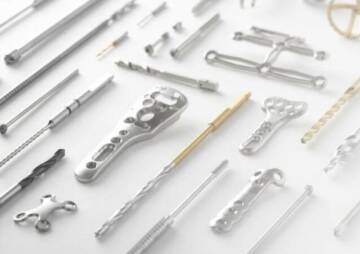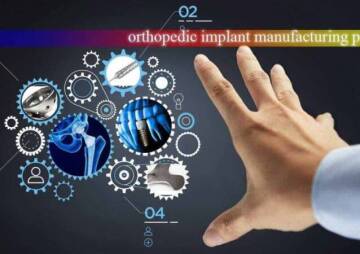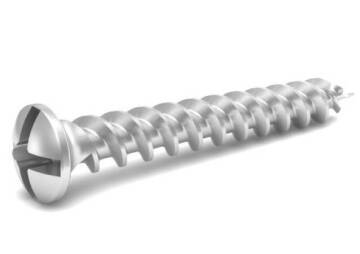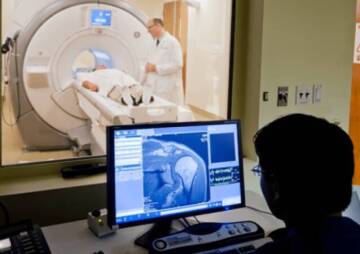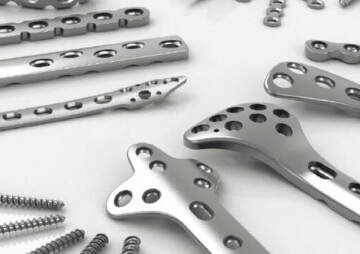-
Category
Craniomaxillofacial Surgery
Orthopedic Surgery
Spine Surgery
Orthopedic Implants
Hip Surgery
Knee Surgery
Pectus Excavatum
Bone Graft
Disinfectants
Healthcare
What Is A PEEK Implant?
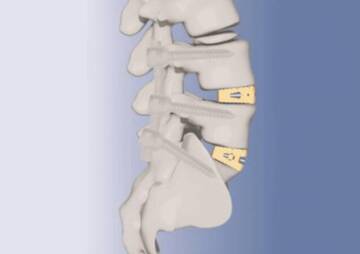
PEEK implants had used since 1990s, and it was widely advertised as a biomaterial for implants in April 1998. The initial use o of PEEK implants was for orthopedic purposes especially spinal surgery.
We go straight to the PEEK definition; Polyether ether ketone, abbreviated as PEEK, is a semi-crystalline organic thermoplastic polymer. The outstanding properties of PEEK, such as, high durability, low moisture absorption, bone-like modulus, load bearing, thermal resistance, flexibility, toughness etc. making it a popular and standard biomaterial.
As a member of Polyaryletherketone (PAEK), PEEK outperformed in medical and healthcare areas. PEEK is extensively used for surgical implants and specifically orthopedic implants. It is a satisfactory material for both surgeons, as it easily implemented during surgery and fit precisely in the patient body, on the other hand, it is an optimal material for patients as it helps quick recovery after the surgery. PEEK has excellent mechanical and chemical resistance properties and at the same time it is an environmentally friendly material and a recyclable plastic. They are also used in surgical instruments and laboratory equipment.
History of PEEK Implant
PEEK, was first developed for aerospace purposes in 1978. It was widely used in different industries such as aerospace, healthcare, food and beverage, chemical and Pharmaceutical etc. PEEK had emerged as an alternative for metal implants by the late 1990s, and it was widely advertised as a biomaterial for implants in April 1998. The initial use o of these implants was for orthopedic purposes especially spinal surgery.
After a wide clinical acceptance, it is used for cardiovascular, dental implants and many other medical applications. PEEK Shows few drawbacks in healthcare area during 20 years, however, as a new biomaterial, it needs to be developed and improved based on the future studies.
PEEK Application in Healthcare and Medical Area
PEEK is widely used in medical and healthcare solutions. It was first used as spinal implant in 1999 and now orthopedic is a growing field of PEEK application. PEEK is widely used for spinal implants as the durability and resistance of PEEK implants resemble the characteristics of bone. PEEK implants decrease the risk of osteolysis, lessen the weight and stress shielding. As spinal arthroplasty devices, specifically for spinal artificial discs, they are good replacement for cobalt chromium molybdenum or metal. They help the movement of the spine and they withstand the load of body without breaking. It is also used in other orthopedic surgeries such as hip replacements because of their high strength.
PEEK is also used in making bone screw and pins as they have excellent capability to fix the bone in place and help the patients to get recovered.
PEEK is widely used in manufacturing dental equipment, such as handles on dental syringes, and in dental implants (superstructure, implant abutment, or implant body). As a light weighted and strong materials, PEEK implants are suitable for oral cavity and they are useful in making dental implants such as crowns and bridges. Other advantages of PEEK are reported by the patients as they do not affect taste, they feel comfortable and they don’t have allergic reaction.
PEEK implant craniosynostosis: Unilateral coronal synostosis may require surgical correction. PEEK is a useful material for correcting craniosynostosis and it gives a great aesthetic result. It is reported that PEEK implants are not only durable but very beneficial in creating symmetry in craniosynostosis cases.
Cardiovascular: PEEK implants, with their unique modulus, mechanical strength and their high durability, play a significant role in cardiovascular operations and implanting devices around the heart. They are also used in manufacturing vascular medical devices such as stent, heart valve, ablation catheters etc. In cardiovascular LIVE procedure, PEEK implants work as an anchor to control the stress on the tether caused by the constant heart beating.
Why PEEK implant is a good substitute for other traditional implants?
Before PEEK become popular in medical community, titanium was a biomaterial specially as an interbody fusion device. PEEK is a better option than titanium for most of surgeons due to the following advantages:
Flexibility
PEEK is more flexible than Ti. PEEK as a flexible biomaterial is still an excellent weight-bearing material suitable for orthopedic and spinal implants. PEEK’s ability to bend resembles the behavior of bone. This feature makes it an excellent replacement for other orthopedic implants, such as titanium which is stiffer than bone.
Radiolucency
Titanium is not transparent to X-rays, MRI, CT scans. PEEK is clear and does not interfere with medical imaging. Therefore, the created image is readable which is an important feature for postoperative monitoring.
Aesthetic features
In the area of dental implants, Ti is the main material. PEEK implants are a good replacement for having a more aesthetic appearance than Ti. To add more reasons, PEEK is a good replacement due to their compound structure, elastic module, osteogenic, enough fatigue limits and other functional properties.
Thermal resistance
PEEK material shows high-temperature stability compared to other metal implants which created a more comfortable situation for the Patients. It is extensively reported by patients with titanium plates that they experience an intensive pain when their body’s temperatures fluctuate.
5 Significant Properties of PEEK
Polyetherketones are known for their numerous properties making them a popular material in health care area. Below we will talk about the most important properties of PEEK:
. Heat resistant: PEEK shows high resistance to heat. It has high melting point at 343 °C and it is suitable for high temperature electrical and biomedical applications.
. Biocompatible: It is easily compatible with human body and it can implement the body without causing serious problems such as cytotoxicity, genotoxicity or immunogenic.
. Light-weighted: Compared to other implants, PEEK implants are lighter. This feature offers a more comfortable life for the patients.
. High tensile strength: These implants, with the tensile strength of about 90-100 MPa, can tolerate the weight of load without breaking.
. Flexible: They have the capacity to be bent easily compared to other traditional implants. This feature makes the PEEK implants an appropriate option for cardiac valves.
More properties of PEEK include:
- Long life
- Insoluble
- low density (1.32 g/cm3),
- low elastic modulus
- low moisture absorption
You can subscribe to Health News Center Newsletter and get updated articles on PEEK innovations. If you are a surgeon and carried out orthopedic implants or if you are a patient undergone implant replacement, please share your experiences with us.

